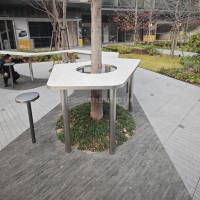Welcome to the website for landscape facilities products and knowledge.
How do landscape tables with biodegradable materials perform over time compared to traditional options?
As sustainability becomes a priority in outdoor design, biodegradable landscape tables are gaining popularity. But how do they perform over time compared to traditional wood, metal, or plastic options?
Biodegradable tables, often made from materials like bamboo, recycled plant fibers, or bioplastics, offer clear environmental benefits. They decompose naturally at the end of their lifespan, reducing landfill waste. However, their long-term durability varies significantly by material quality and climate conditions.
In moderate climates, high-quality biodegradable tables can last 3-5 years with proper maintenance—comparable to untreated wood. They resist moisture better than traditional wood in damp environments but may degrade faster under intense sunlight without UV protection. Traditional metal or plastic tables typically outlast both options, often enduring 10+ years.
Maintenance differs too. Biodegradable tables require regular sealing with natural oils to prolong lifespan, while traditional options need staining or rust prevention. Cost-wise, biodegradable tables currently carry a 20-30% premium over basic traditional options but match premium wood furniture prices.
The choice depends on priorities: biodegradable tables win for eco-conscious buyers accepting shorter lifespans, while traditional materials suit those seeking decades of use. As material science advances, the performance gap is narrowing, making biodegradable options increasingly competitive for sustainable landscaping.
Related search:

Recommendation
An outdoor bar counter with stainless steel and terrazzo materials in an irregular shape